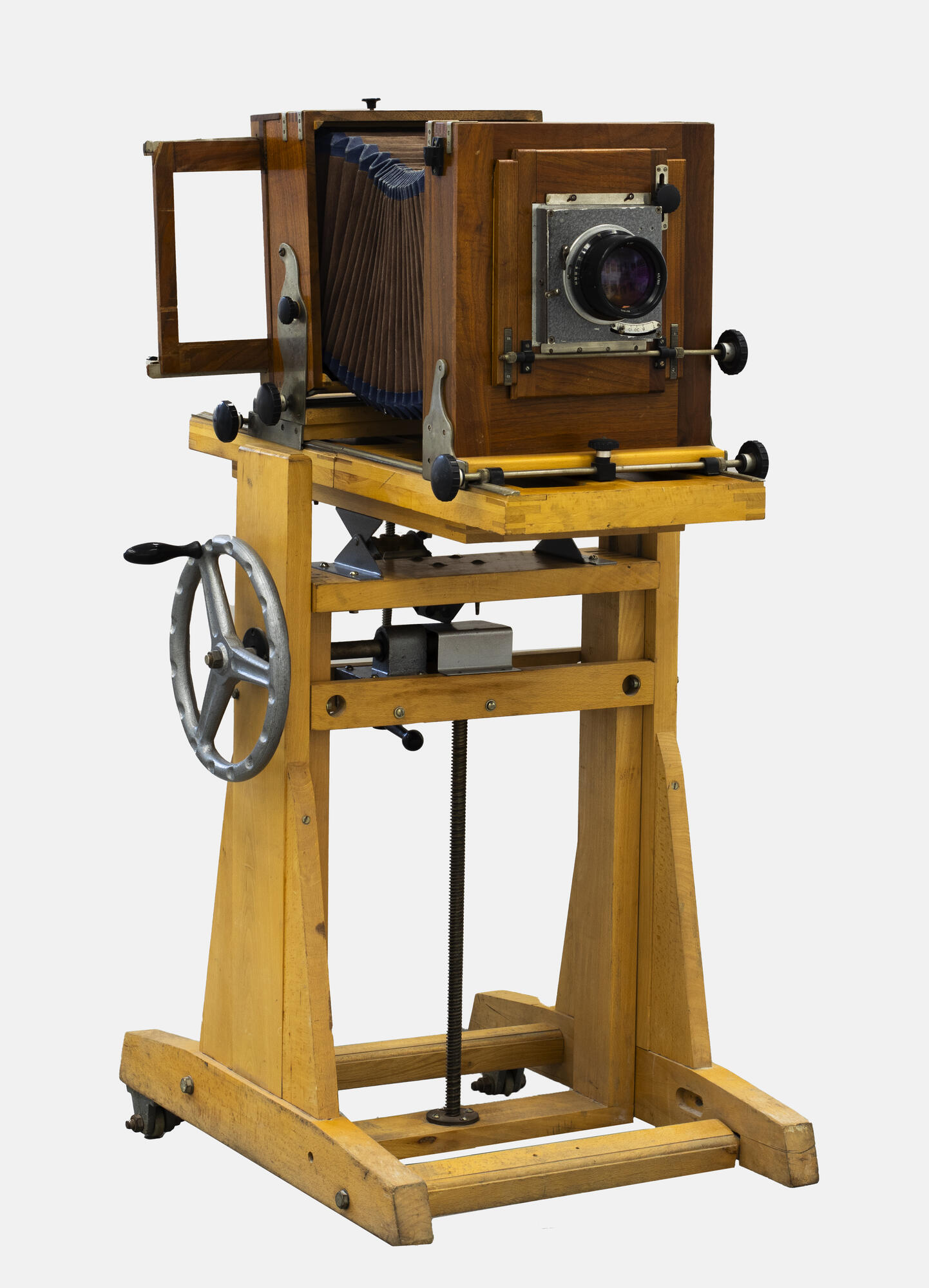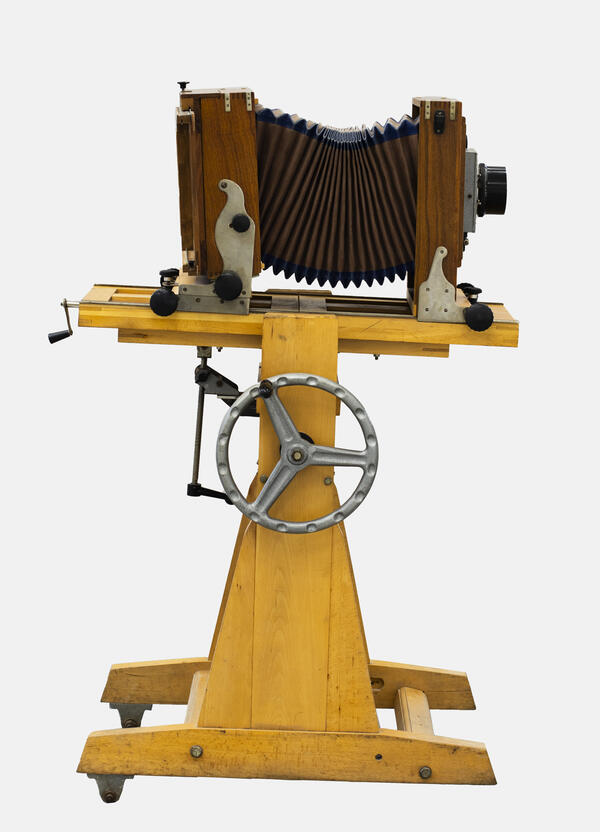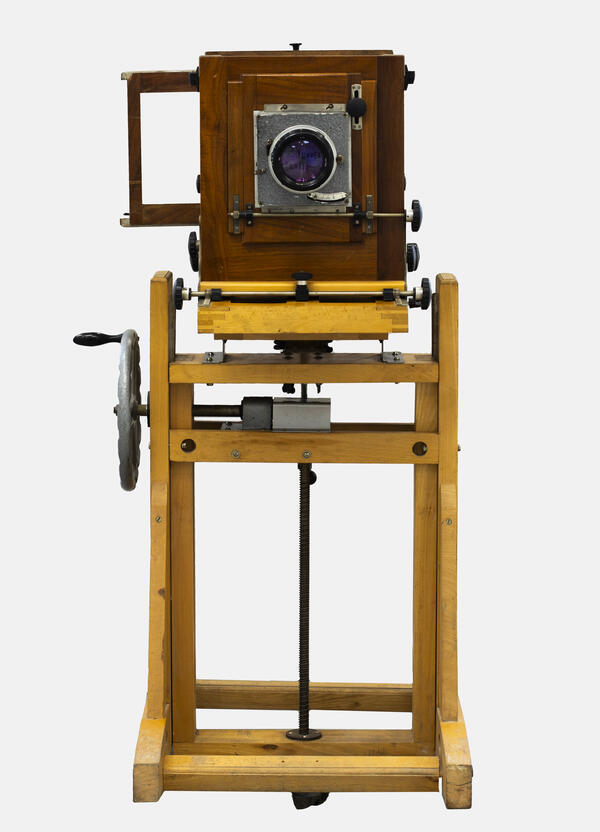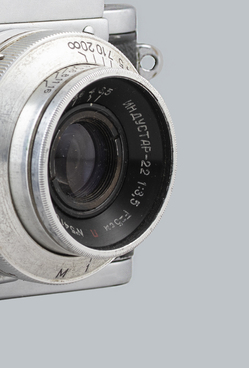Large format studio cameras were produced in several variants: a travel camera (FKD), a studio camera (FKP) and a copying camera (FKR) for making reproductions. They take different frames: 13 by 18 cm, 18 by 24 cm and 30 by 40 cm correspondingly.
At different times, such cameras were made by different manufacturers: from 1930, they were produced by the Kubuch workshops at the Leningrad Photo-Cinema Technical School, later they were produced at the Leningrad State Optical-Mechanical Factory and the Moscow Geofizika plant, and from 1968 — at the Orgtekhnika factory in Kharkiv.
The camera’s foldable body was made of wood, usually oak, so the device was heavy. This provided good stabilization and eliminated camera shake. The device came with a sturdy wooden tripod on wheels. The cassette plate and the lens board moved along the camera baseboard.
The photographic material was glass plates or sheet photographic film, which were put in wooden double-sided cassettes.
The camera had a double-extension bellows, and the inclination of the cassettes could be adjusted horizontally and vertically. The ground glass frame could also be adjusted, and this enabled taking not only horizontal but also vertical pictures.
The camera had interchangeable screw-mount lenses attached to the removable lens board. The device was initially equipped with imported Zeiss optics but had no central shutter. The exposure was manual and required removing the lens cap. Removable center shutters were sold separately and could be fitted immediately behind the lens.
There was no viewfinder either. So, a photographer inserted a ground glass instead of a cassette and adjusted the sharpness and the frame of a future photo, all the while covering the shoulders with a black focusing cloth.
These cameras were produced from 1930 to 1987, thus they were known to several generations of Soviet people, as they were used by almost every photo studio in the country.




